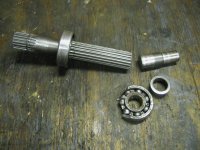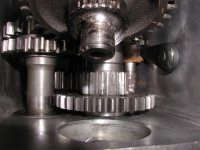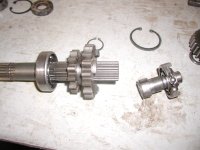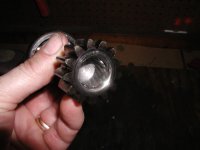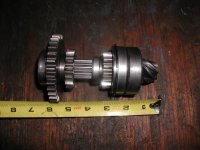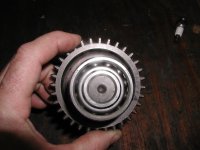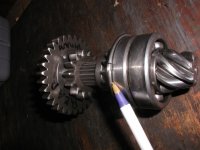woodburner
New member
Hello,
I recently thought I got a great deal on ebay. I bought a project instead...
So...I'm in the process of rebuilding the manual transmission, rear axles and rear differential on this B7100D. After closely studying the parts and service manual while dis-assembling the tractor, most of the rebuild is pretty straight forward. I'm replacing EVERY bearing, seal, cir-clip, worn bushing etc. I'm also replacing the front U joints, seals, pilot bearing, and clutch while I've got the tractor split. So far I've got about $1500.00 in parts. The transmission and related PTO on this tractor were in pretty rough shape... I've had to replace 4 gears that were worn, chipped and/or missing teeth. I've also had to replace 3 shafts. The PTO shaft was completely broken in two pieces!
My questions are these:
1) To adjust the backlash on the rear differential ring and pinion gear, I realize that you have to vary the size of the shims that are behind the ball bearings on either side of the differential assembly. By varying the thickness of the shims it "moves" the ring gear closer (or further away) to the pinion gear, thereby changing the backlash. Can I simply adjust the size of the shim on either side of the differential assembly to accomplish this; or do I have to have the same size shims on both sides in order to "center" the ring gear on the pinion gear and also obtain the correct backlash?
2) On the PTO shaft the parts list shows three different shims between the PTO rear cover and the PTO shaft rear bearing. I assume that these different size shims are available in different sizes in order to adjust end play on the PTO shaft? However, I cannot find any specs on endplay of the PTO shaft in the Work Shop Manual or reference to using these different size shims.
3) On the very front of the pinion shaft, between the first bearing on the shaft and the rear of the tranmission case, there are again 3 different size shims listed in the parts book, but no reference to these shims anywhere in the Workshop Manual. These shims fit in the bearing recess between the front pinion thrust bearing and the case. It looks like the purpose of these shims is to move the pinion shaft closer to the ring gear? However again, I can find nothing in the manuals about this adjustment?
Anyone that has experience or knows who I can ask about these question I would really appreciate the help.
For fun I attached a few photos of the distressed transmission parts.
Thanks
I recently thought I got a great deal on ebay. I bought a project instead...
So...I'm in the process of rebuilding the manual transmission, rear axles and rear differential on this B7100D. After closely studying the parts and service manual while dis-assembling the tractor, most of the rebuild is pretty straight forward. I'm replacing EVERY bearing, seal, cir-clip, worn bushing etc. I'm also replacing the front U joints, seals, pilot bearing, and clutch while I've got the tractor split. So far I've got about $1500.00 in parts. The transmission and related PTO on this tractor were in pretty rough shape... I've had to replace 4 gears that were worn, chipped and/or missing teeth. I've also had to replace 3 shafts. The PTO shaft was completely broken in two pieces!
My questions are these:
1) To adjust the backlash on the rear differential ring and pinion gear, I realize that you have to vary the size of the shims that are behind the ball bearings on either side of the differential assembly. By varying the thickness of the shims it "moves" the ring gear closer (or further away) to the pinion gear, thereby changing the backlash. Can I simply adjust the size of the shim on either side of the differential assembly to accomplish this; or do I have to have the same size shims on both sides in order to "center" the ring gear on the pinion gear and also obtain the correct backlash?
2) On the PTO shaft the parts list shows three different shims between the PTO rear cover and the PTO shaft rear bearing. I assume that these different size shims are available in different sizes in order to adjust end play on the PTO shaft? However, I cannot find any specs on endplay of the PTO shaft in the Work Shop Manual or reference to using these different size shims.
3) On the very front of the pinion shaft, between the first bearing on the shaft and the rear of the tranmission case, there are again 3 different size shims listed in the parts book, but no reference to these shims anywhere in the Workshop Manual. These shims fit in the bearing recess between the front pinion thrust bearing and the case. It looks like the purpose of these shims is to move the pinion shaft closer to the ring gear? However again, I can find nothing in the manuals about this adjustment?
Anyone that has experience or knows who I can ask about these question I would really appreciate the help.
For fun I attached a few photos of the distressed transmission parts.
Thanks
